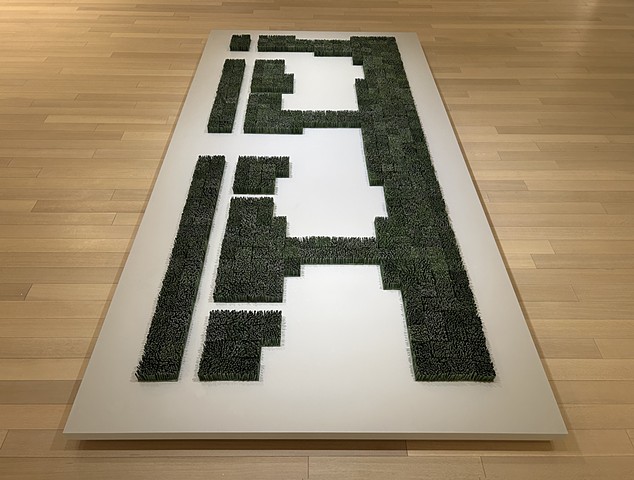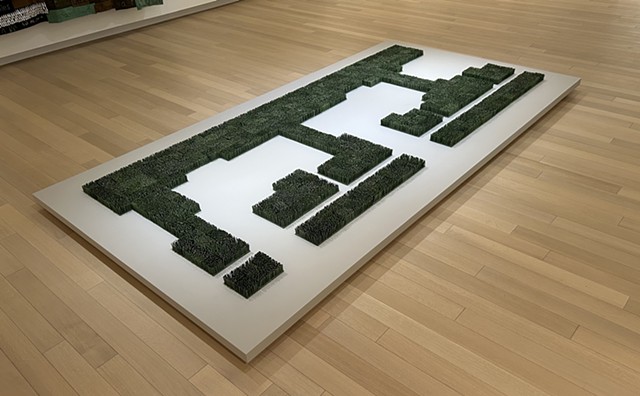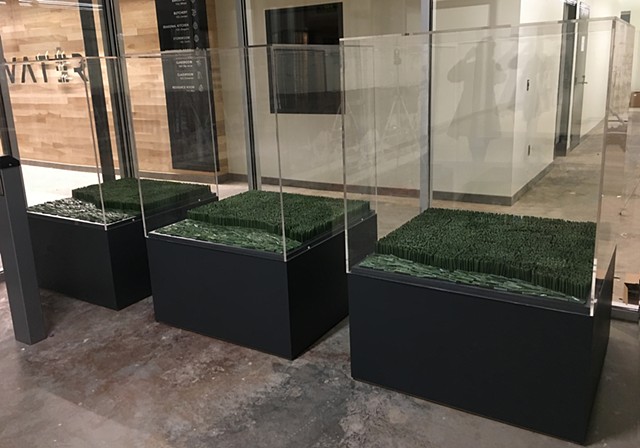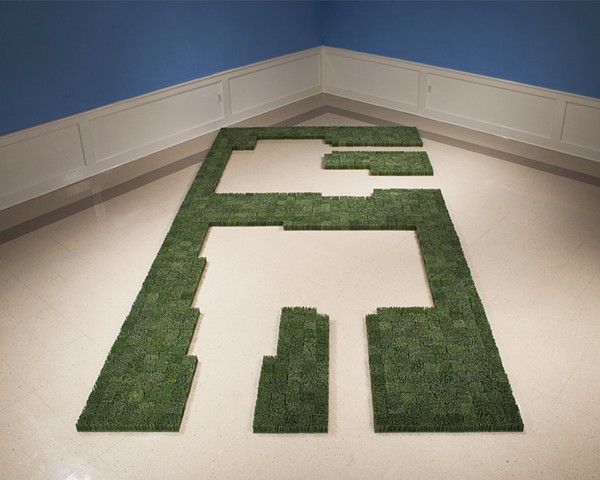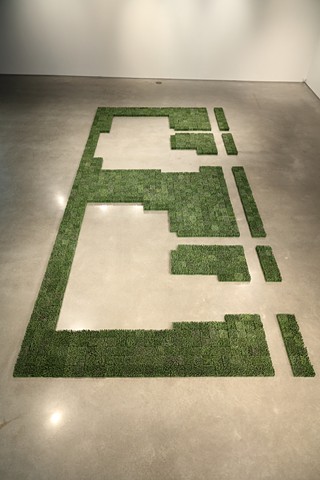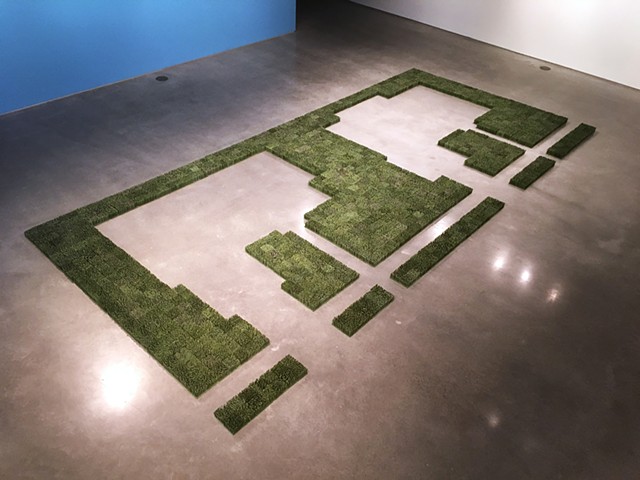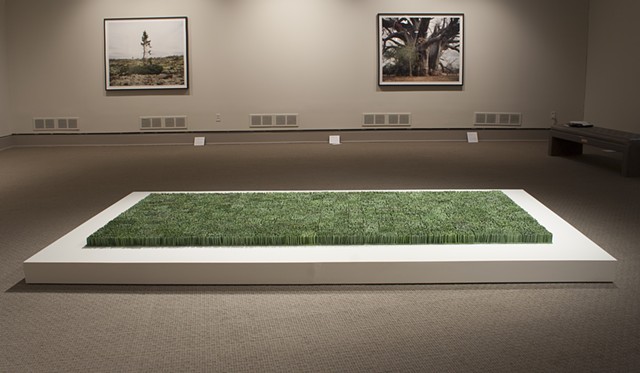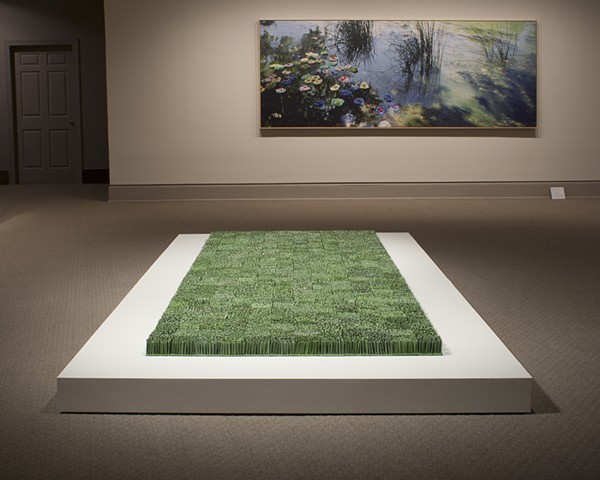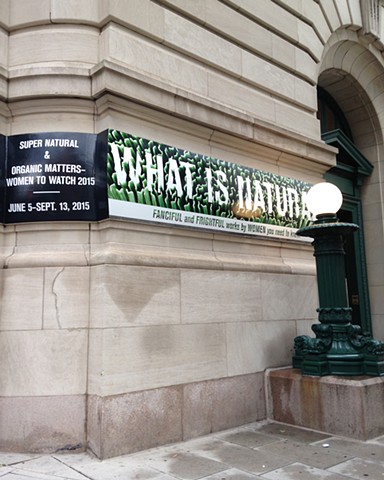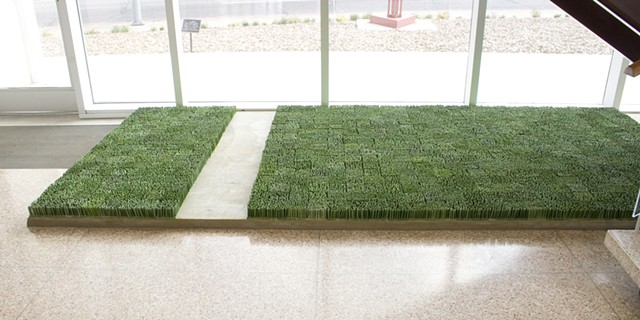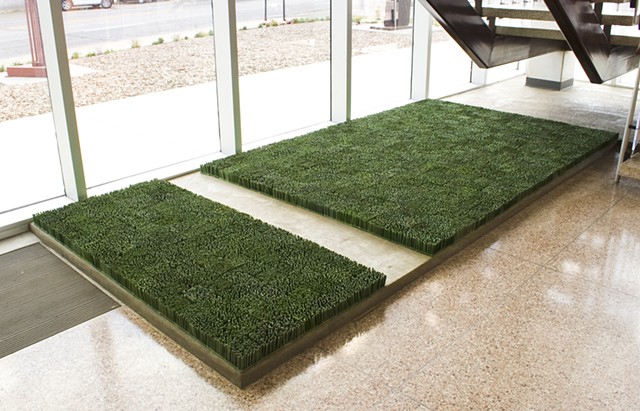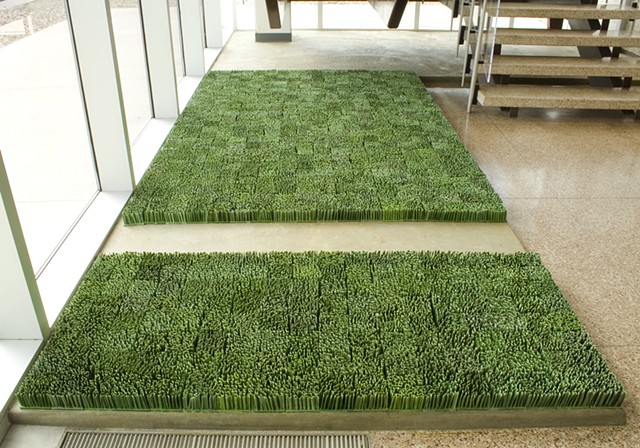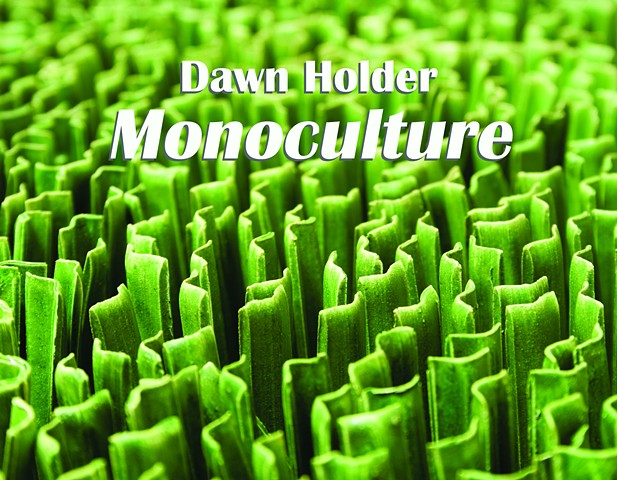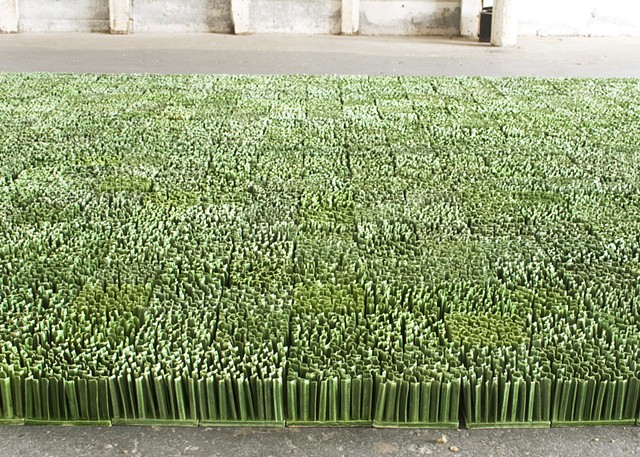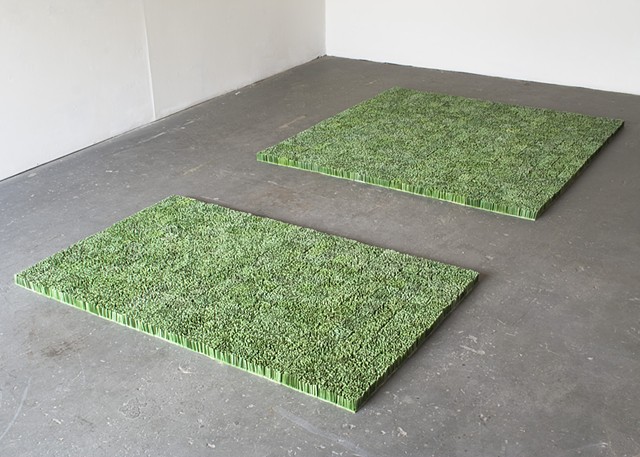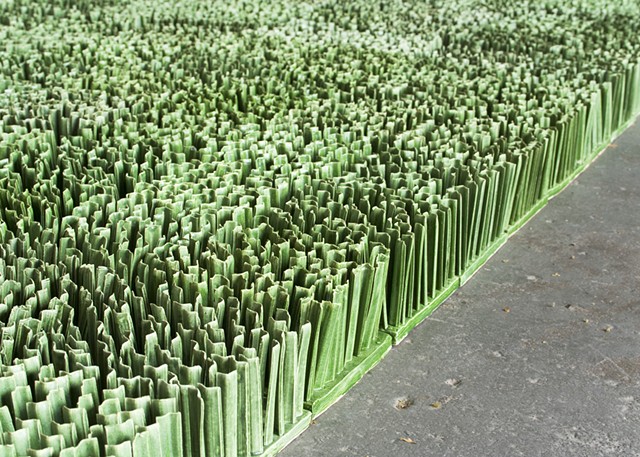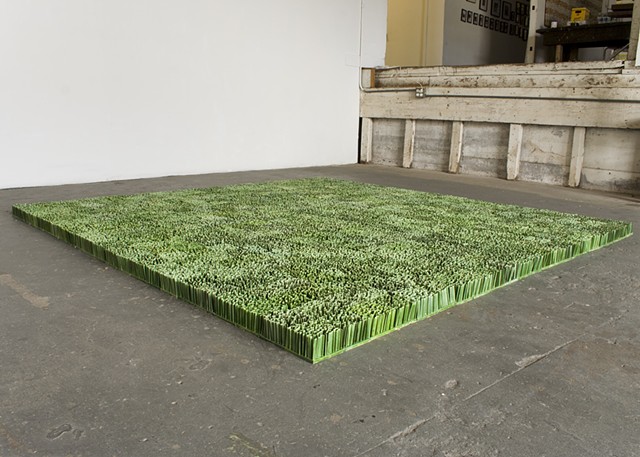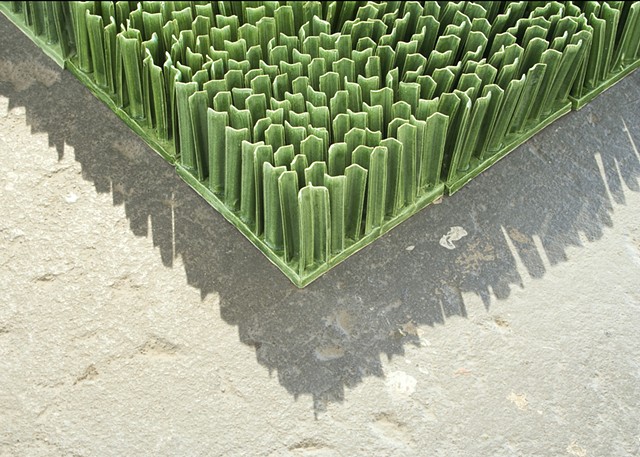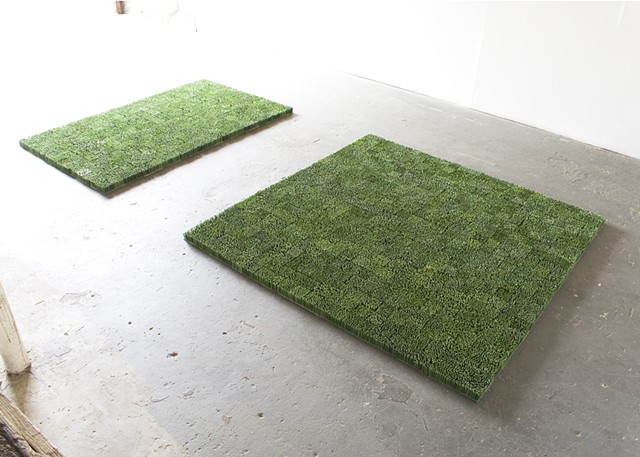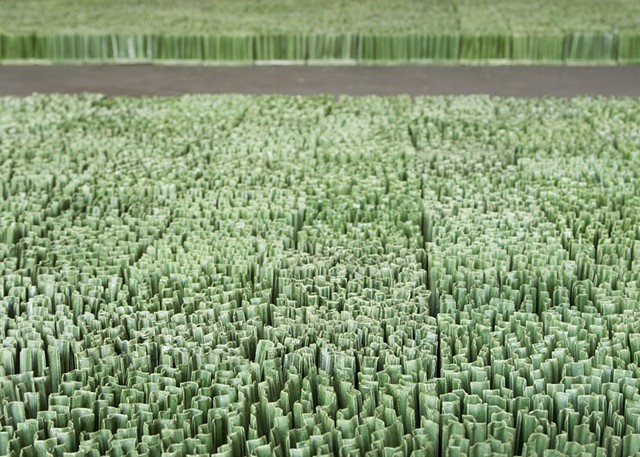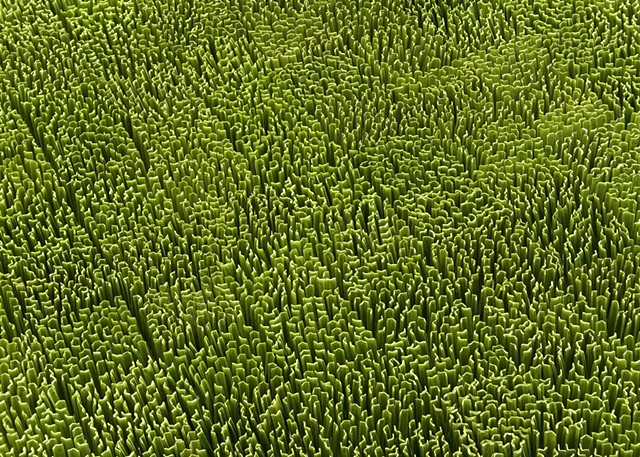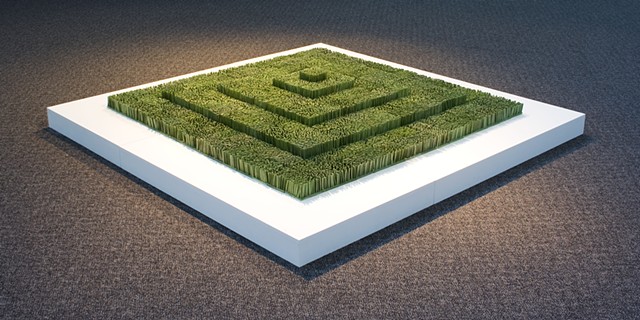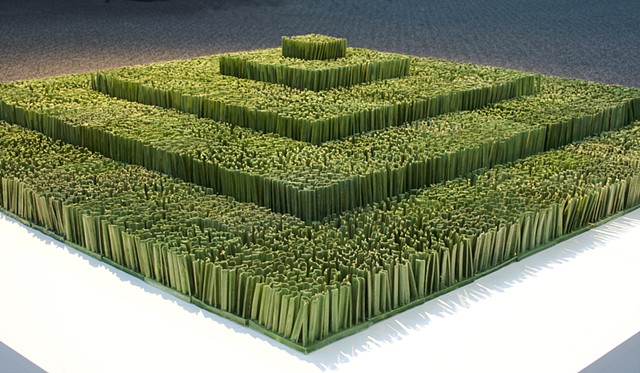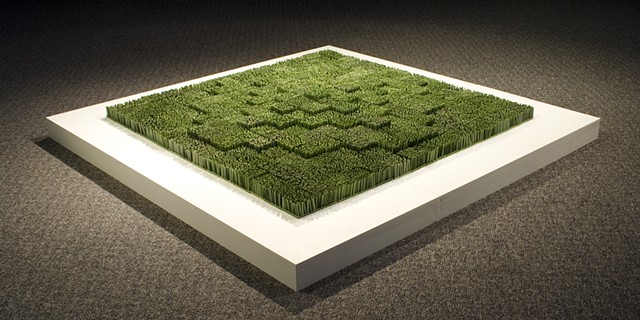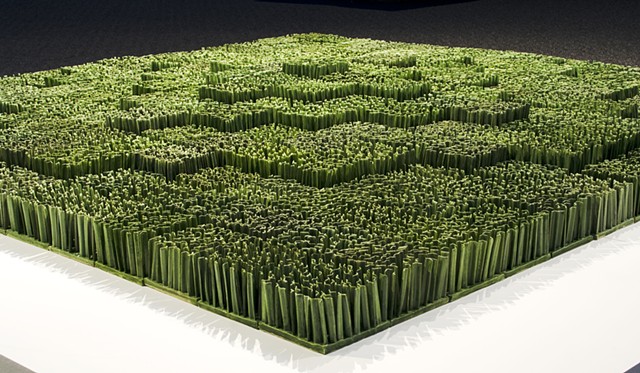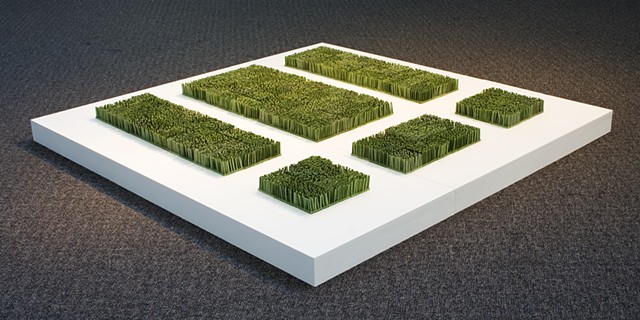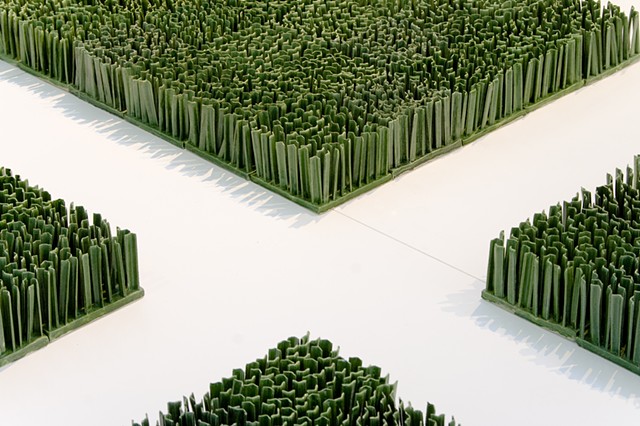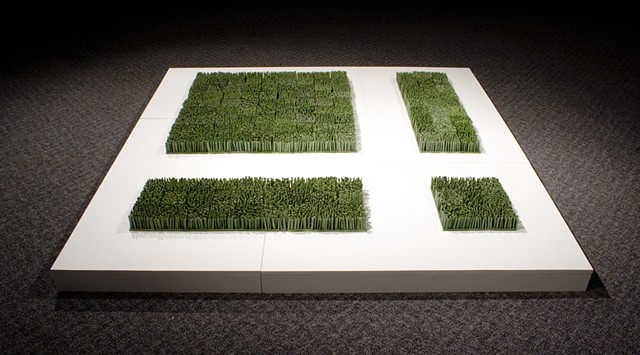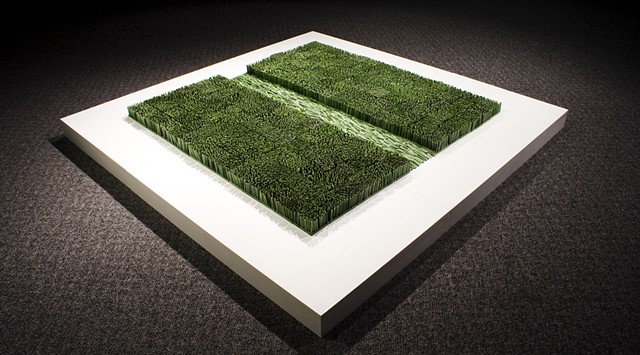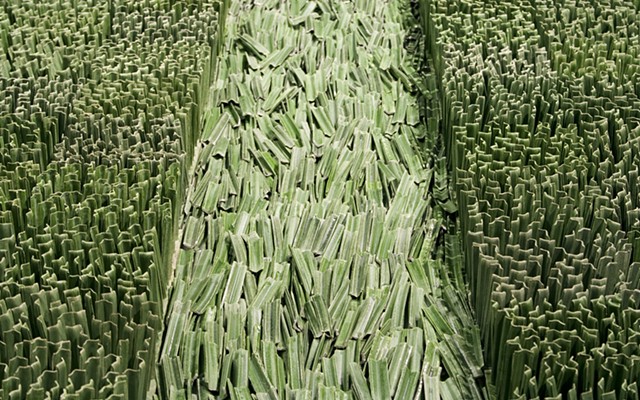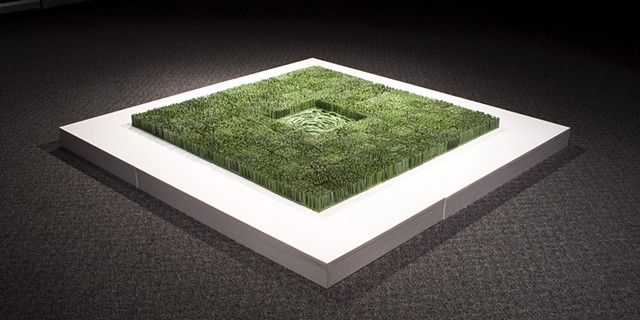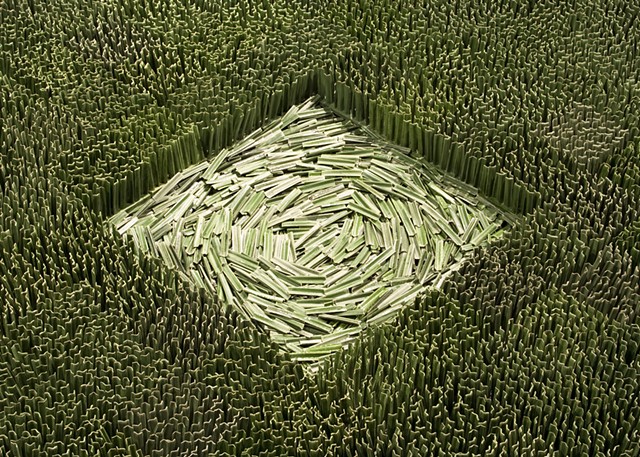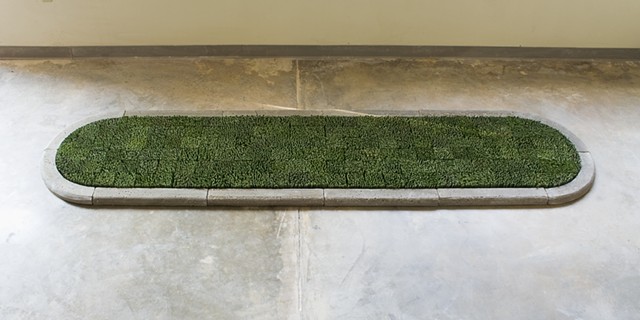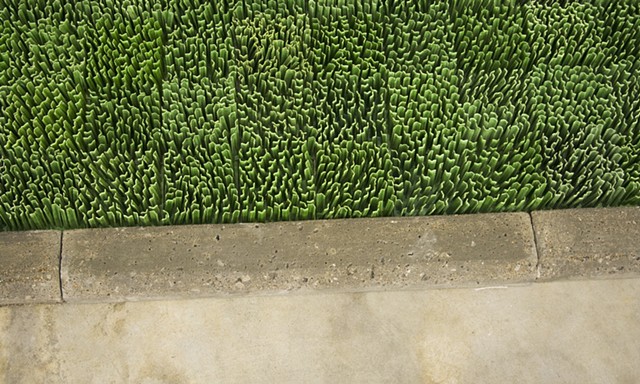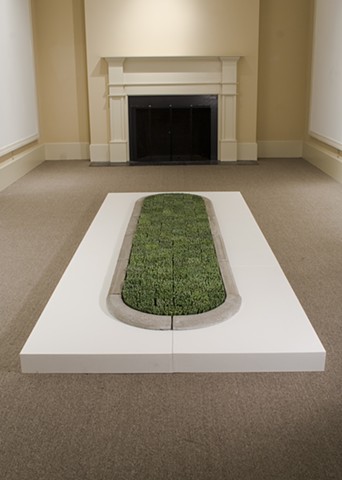Porcelain Lawns
Manicured grass is an element of landscape that commonly recurs in my work. I am fascinated by the various and divergent ways that grass functions symbolically in American culture. Suburban lawns, interrupted only by driveways and occasional trees, spread across the horizon forming a park-like expanse, not dissimilar to the landscaping around old world manor houses, giving inhabitants a sense of social stability and calm. Bright green lawns in drought-stricken areas, however, speak of excess wealth and squandered resources. A freshly cut lawn evokes the sweet smell of childhood freedom and play, while unkempt lawns reflect a lack of social conformity and questionable moral standing. Conversely, grass is often used as a placeholder, an impersonal non-entity holding down dirt in transitional spaces like hell strips, medians, and highway dividers.
Grass is the single largest irrigated agricultural “crop” in America, more than corn, wheat, and fruit orchards combined. A NASA-led study in 2005 found that there were approximately 164,000 km2/ 63,000 square miles of turf grass in the United States, covering two percent of the United States, and making it up to three times larger than the amount of irrigated corn (the US's largest irrigated crop).
Additionally, this study found that gasoline-powered lawn mowers and garden equipment are emitting 30 million tons of pollutants yearly in the USA, accounting for a quarter of all non-road gasoline emissions.
